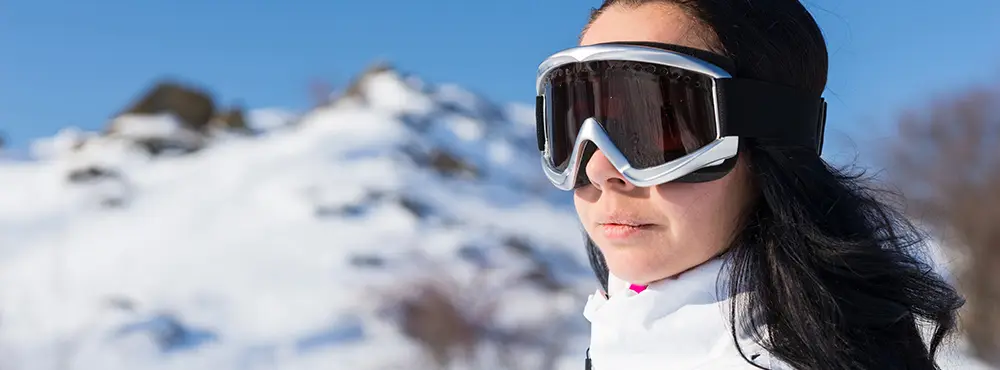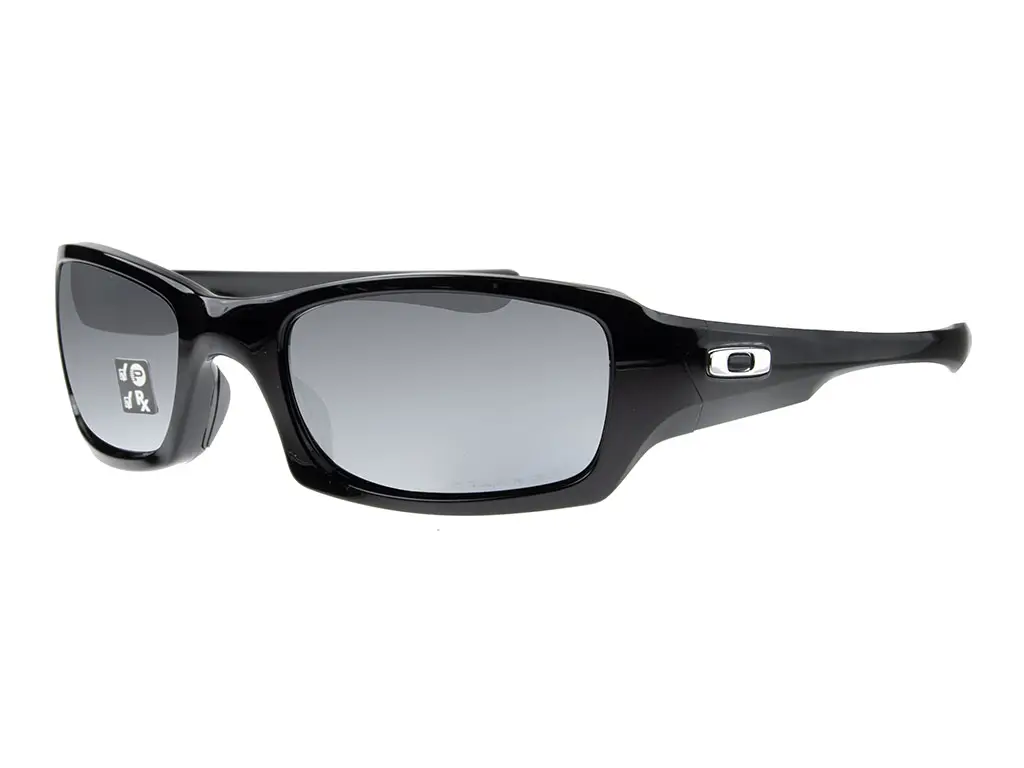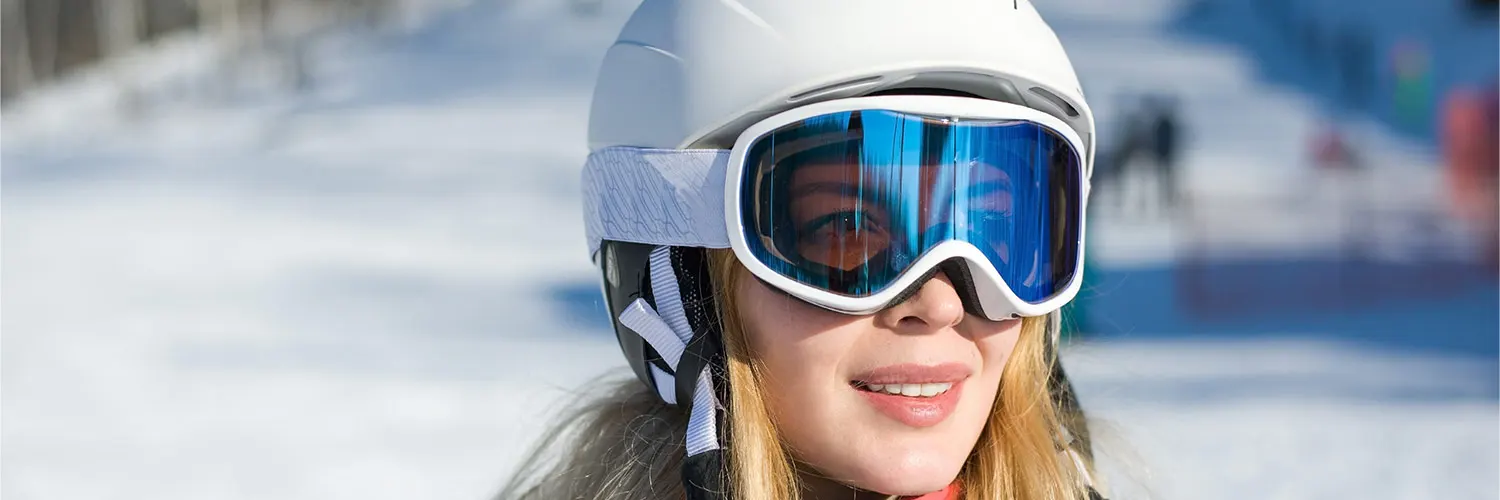Snow blindness is a painful but temporary form of vision loss caused by overexposure to ultraviolet (UV) rays. In this article, we discuss the symptoms, prevention and treatment for snow blindness.
What is snow blindness?
The medical term for snow blindness is photokeratitis. Photo means light and keratitis is the inflammation of the cornea. Snow blindness is the result of your cornea being akin to sunburn. Photokeratitis is caused by damage to the eye from UV rays. Sunlight is the main source of natural UV rays [1]. However, unlike sunburn on your skin, by the time the symptoms of snow blindness appear, you’ve already been in the sun for too long.
Why is it called snow blindness?
Snow itself can reflect more than 80 percent of UV rays which is why it is called snow blindness. Extreme sports such as mountain climbing, snowboarding, and skiing are done in high altitude where the sun’s UV rays are stronger and there is usually more snow, hence the term snow blindness has gained popularity. You can still get snow blindness at lower altitudes, although the risk is lower, almost half in fact.
Despite what the name suggests, you don’t need to be in the presence of snow to be affected by snow blindness. Other sources of snow blindness can include UV rays off sand, water and ice, sunbeds or sparks from welding. Snow blindness is also referred to as corneal flash burn, arc eye, welder's flash and sand man's eye.
What are the symptoms of snow blindness (photokeratitis)?
Typical snow blindness symptoms include:
- Eye pain
- A burning sensation in the eyes
- Red eyes
- Sudden sensitivity to light
- Watering eyes
- Blurry vision
- Swollen eyes
- Swollen eyelids
- The feeling that there is something in your eyes
- Headaches
- Glare and halos around lights
Your symptoms will be more severe, the longer you are exposed to UV rays.
What is snow blindness caused by?
Snow blindness is caused by overexposure to the reflection of UV rays, be it natural or artificial. It can be caused by UV rays reflected off sand, snow and water and ice as well as from sun lamps and tanning beds when not wearing proper eye protection.
Snow blindness in human beings is sometimes caused by welding equipment such as welder’s torch when there is too much UV light. In this instance, it is often referred to as "welder's flash".
Snow-blindness happens when UV light enters your cornea and the sensitive outer layer (the epithelium) becomes irritated and inflamed, resulting in a burning or itchy sensation.
Treating snow blindness
You can treat snow blindness and relieve any pain by following the advice below.
Symptoms of snow blindness usually go away on their own within 1-2 days. However, should your symptoms persist longer than 1-2 days or if symptoms worsen after 24 hours, go and see an eye care professional immediately.
- Over the counter painkillers can help subdue any feelings of discomfort. Make sure to take the recommended dosage and ensure that there are no interactions with any other medications you may be taking. You should only use painkillers which you know you can take and won’t result in an allergic reaction. You can check with your GP or doctor in case of any doubt
- Avoid bright light and stay indoors
- Wear sunglasses during the day and a night mask when you go to sleep
- Keep your eyes moistened by using eye drops or artificial tears. Stick to mild, preservative-free formulas that are gentle on the eyes and will not cause more irritation
- Dampen a cloth in cold water and place it over your closed eyelids to provide temporary relief. We recommended you do this first thing in the morning and just before you go to sleep
- Avoid rubbing your eyes
- If you wear contact lenses, remove them immediately and avoid wearing contact lenses until the issue subsides
Glasses for snow blindness
If you have snow blindness, it's best to wear glasses rather than contact lenses until you've experienced a few days with no symptoms.
To prevent snow-blindness from happening in the first place, we would recommend you wear sunglasses with 100% UVA and UVB protection. Wrap sunglasses are a great choice as they offer maximum protection from harmful UV rays, due to their style and close fit.

 Offers
Offers Account
Account
 Favorite
Favorite
 Basket
Basket

 OFFERS
OFFERS


















